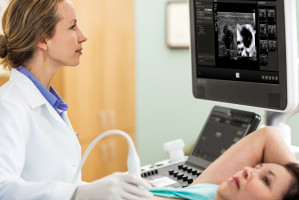
Women who report non-radiologic symptoms such as lumps, nipple retraction or nipple discharge during their regular breast screening appointments, are at higher risk of developing breast cancer during the interval before their next visit in two or three years’ time as part of a national screening programme.
In new research presented at the 11th European Breast Cancer Conference, Dr Deependra Singh, a researcher at the Finnish Cancer Registry, Helsinki, Finland, said that even though women were more likely to be recalled for further investigations after their mammogram if they had breast symptoms, cancer could still be missed in a significant number of these women, and they were more likely to have cancer diagnosed either before or at the time of their next standard screening visit.
“We found that women with a lump had a three-fold increased risk of cancer being diagnosed in the interval before their next scheduled screening, and approximately two-thirds increased risk of cancer being detected at the time of their next mammogram, when compared with women who had no symptoms,” he said.
Dr Singh and his colleagues found that for every 1000 screening visits, two cancers per 1000 women were found within six months of the visit among women who had a lump at the time of their mammogram; whereas, among 1000 women without symptoms at the time of their screening, two cancers would be found within two years.
"This means that women with breast symptoms should undergo further assessment irrespective of mammography findings. In addition, the higher risk of interval cancers means further assessment is not the complete solution; mammography doesn’t detect all breast tumours and can miss about 35-40% of them. So women with symptoms, especially with a lump, should be invited at shorter intervals, before the normal scheduled date.”
In Finland the national breast cancer screening programme invites women for mammograms every two years between the ages of 50 and 69, although a few municipalities go up to the age of 74.
The screening interval varies between European countries; in the UK, for instance, women are invited every three years between the ages of 50 and 70, while in France women aged between 50 and 74 are invited every two years.
In Spain, screening programmes vary between regions but tend to invite women every two years between the ages of 50 and 69.
The research presented today looked at women who participated in the Finnish National Breast Cancer Screening Program from 1992 to 2012.
Women with or without symptoms and who went on to have breast cancer diagnosed were identified from the Finnish Cancer Registry.
There were 51,332 women who had a lump when they attended screening, 40,917 had a retracted nipple, and 9,083 had discharge from a nipple.
They were matched with a reference group of women who had no symptoms at the time of a screening visit.
Women who did have symptoms at their time of their visit for screening were more likely to be recalled for further investigations than women with no symptoms: about 15% were recalled if they had a lump compared to 3% of women with no symptoms.
Women with a lump had a more than three-fold increased risk of breast cancer being detected in the screening interval before their next scheduled visit.
Women with nipple discharge had two-fold risk and those with nipple retraction had a 1.5-fold risk.
“We know already that a substantial proportion of breast cancers, about 30-40%, are detected outside national screening programmes. There is room for improvement in the capability of mammography to detect cancer and our research shows this is particularly the case for women who have breast symptoms. Our findings can be extrapolated to other countries that have national mammography screening programmes, and we encourage these programmes to collect and analyse information on symptoms,” concluded Dr Singh.
Chair of the conference, Professor Robert Mansel, Emeritus Professor of Surgery in Cardiff University School of Medicine, Cardiff, UK, who was not involved with the research, commented “This is important research that highlights the need for further, careful investigations if women attend their normal breast cancer screening appointment with breast symptoms such as a lump, nipple discharge or retraction, as they have a higher rate of interval cancers. We know that survival is much better if breast cancer is detected in its early stages, and further research is indicated to determine the best way of monitoring these women more closely, including the possibility of shorter intervals between screening mammograms.”
Source: EBCC